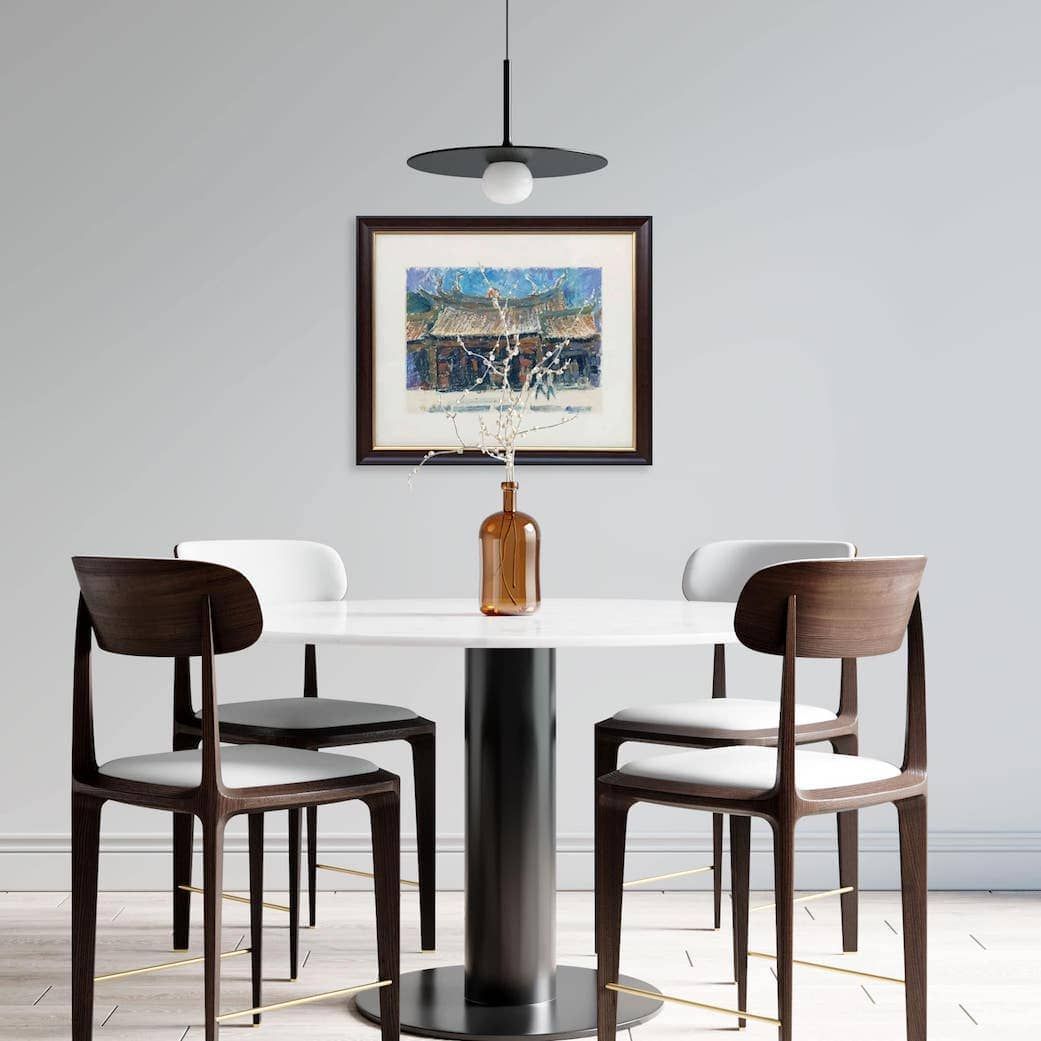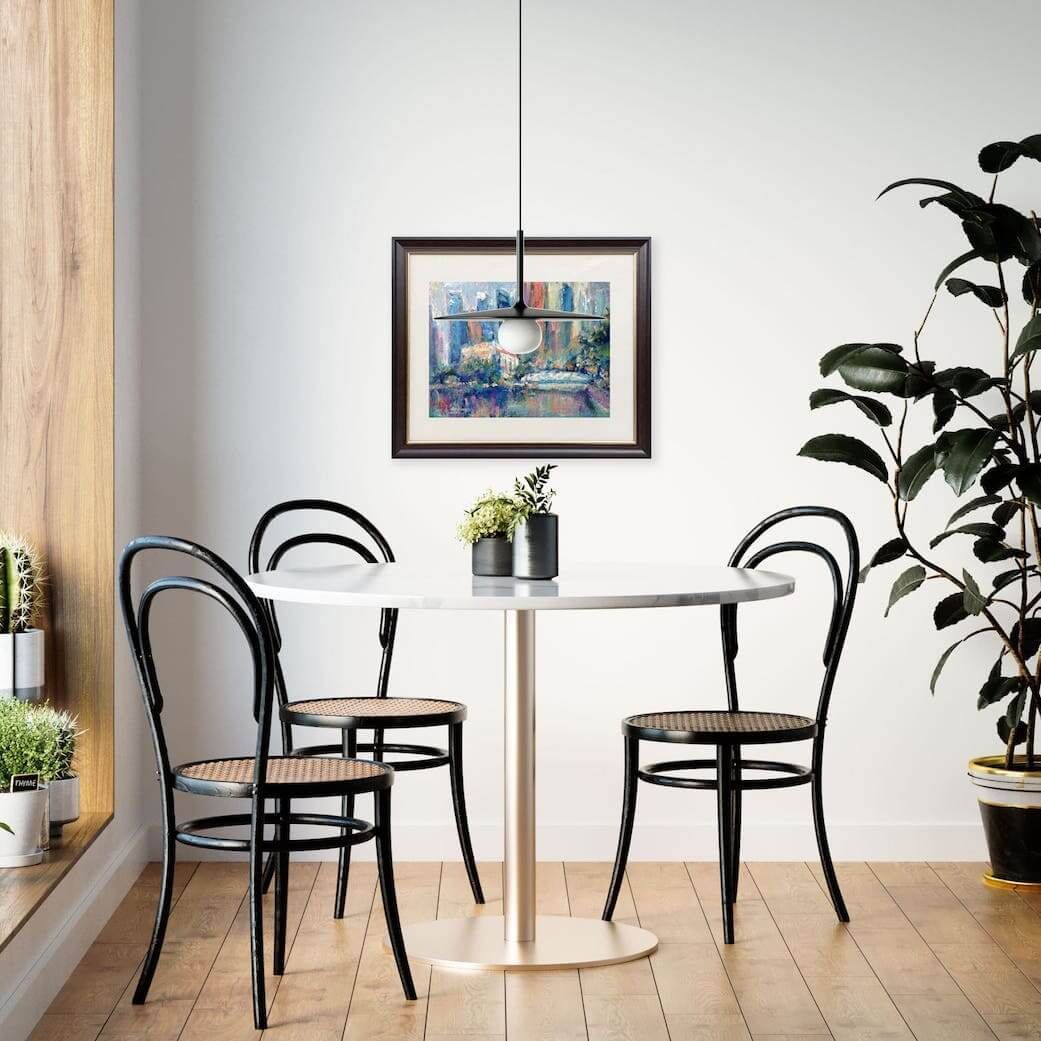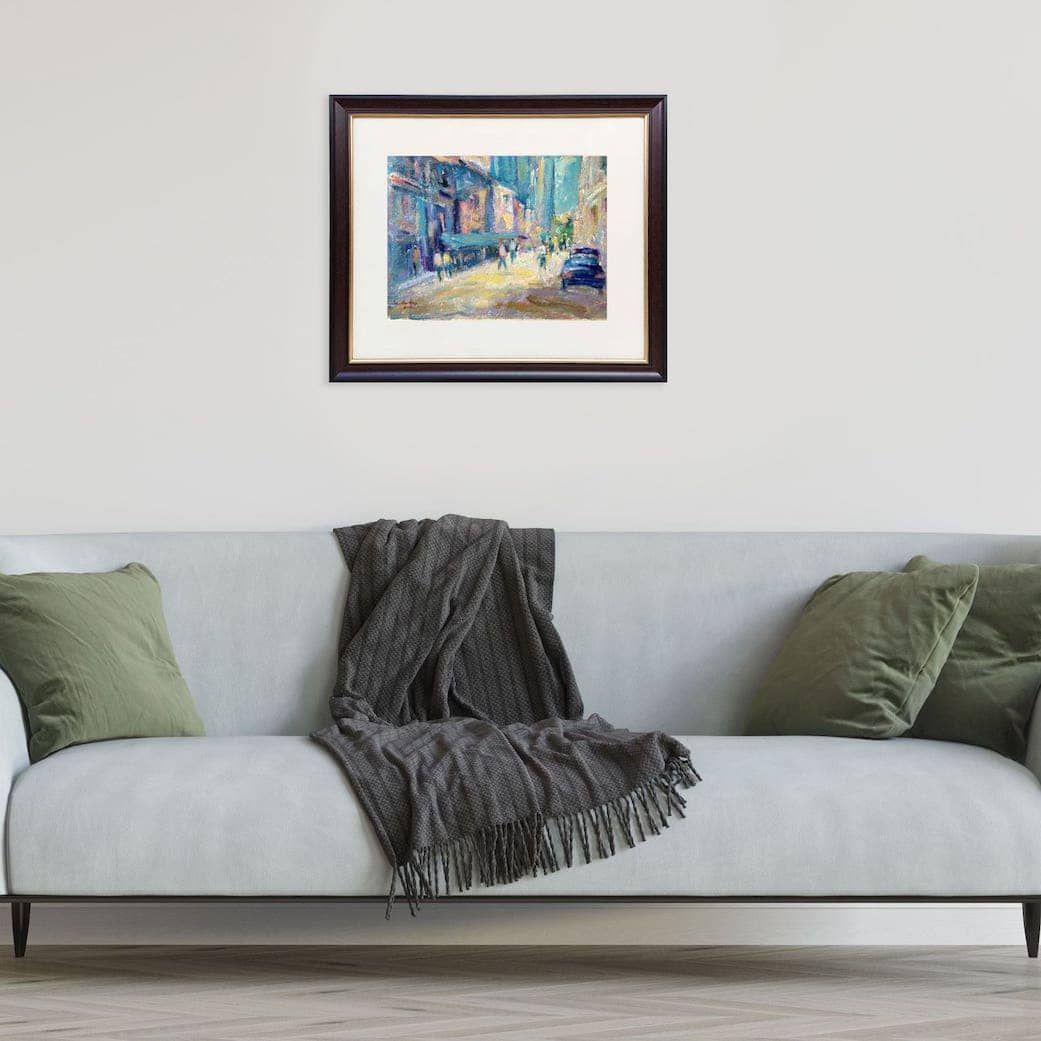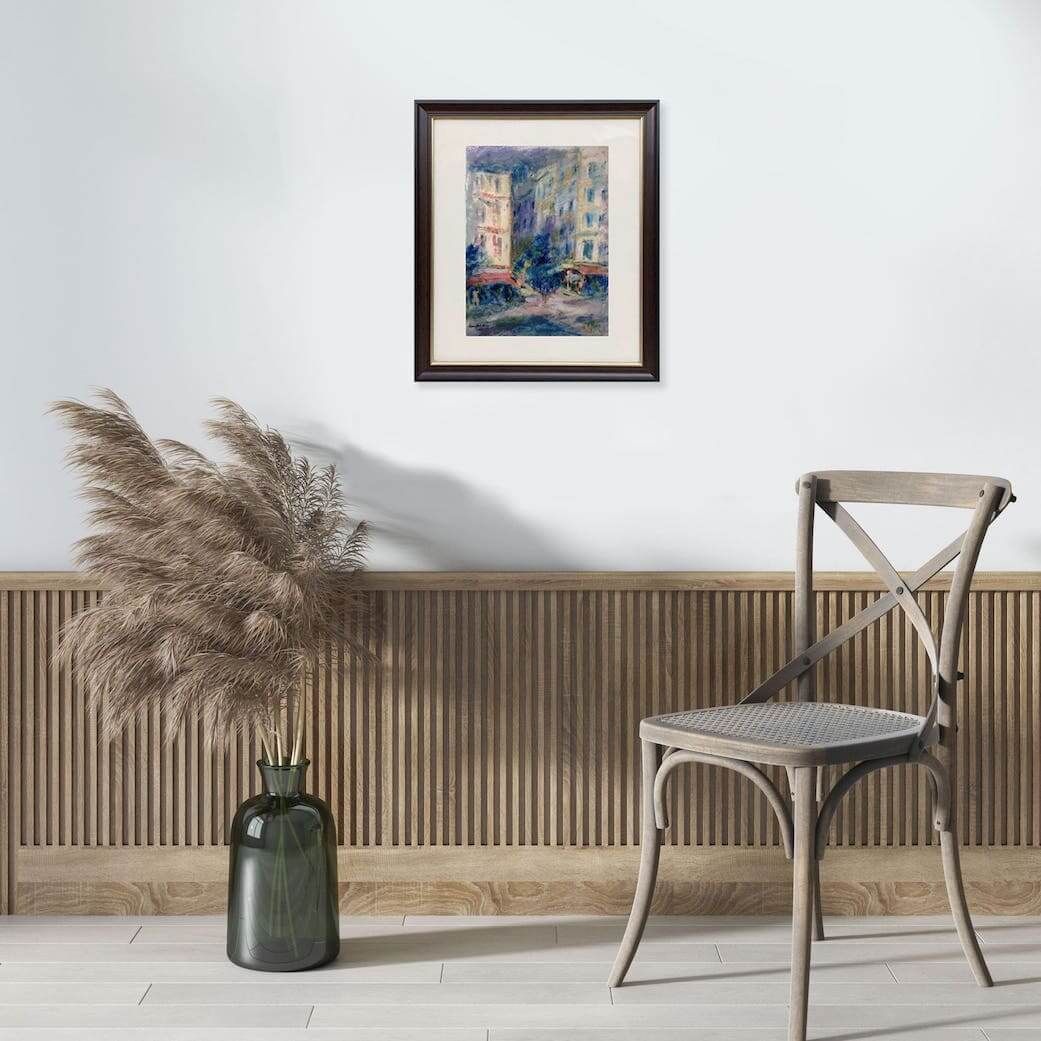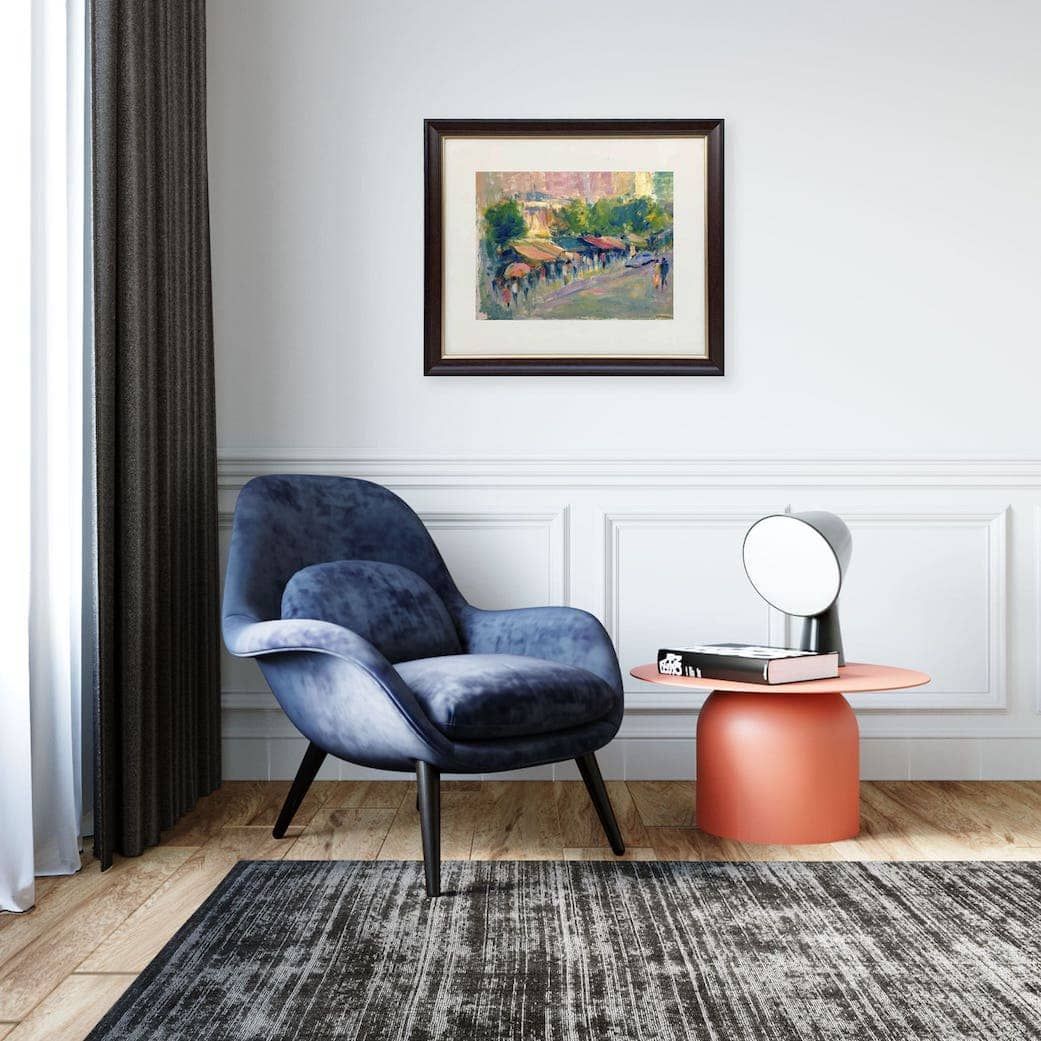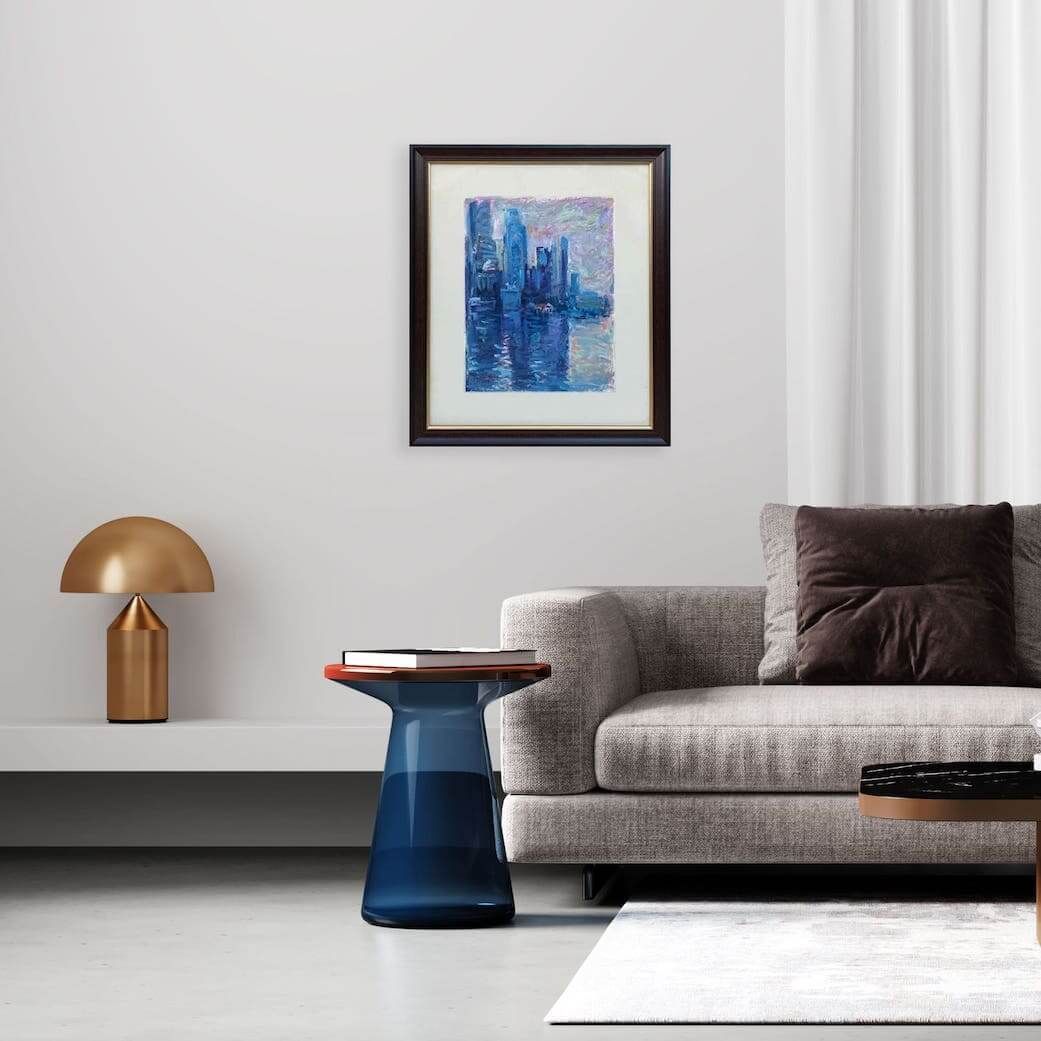Blog Article Template 1
I Bought a Painting. How Should I Display and Take Care of It?
So, you have taken the plunge and brought a beautiful new painting into your life. Congratulations! Buying a painting is an exciting milestone.
Whether it is a bold oil painting, a delicate watercolour, or a vibrant Chinese ink artwork, a painting can add character and warmth to your home.
However, displaying and caring for your artwork requires some thought.
In this article, we will guide you through the best practices for displaying and maintaining your painting, covering everything from finding the perfect spot to understanding the unique needs of different art mediums, and the special considerations if you live in a tropical climate like Singapore, ensuring it remains a cherished part of your collection for years to come.
How Should I Display My Painting?
Displaying your painting is not just about hammering a nail into the wall.
It is about creating an environment where your artwork can truly shine and be appreciated.
Properly displaying a painting does more than showcase its beauty—it helps preserve it for years to come. Here are some key considerations:
Choose the Right Wall
Select a spot where the painting can be appreciated but is safe from environmental harm.
Avoid direct sunlight, which can fade colours, and steer clear of damp areas like bathrooms or kitchens unless you are displaying a medium that can handle humidity. Ideal spots are:
- Living rooms
- Bedrooms
- Hallways with soft lighting
- Offices with climate control
Think about where your painting will be seen most often.
High-traffic areas like living rooms or entryways are great for statement pieces. For more intimate works, a bedroom or study might be perfect.
Hang at Eye Level
Generally, the standard recommendation is to hang art so that the centre of your painting is at eye level for an average viewer for the best visual impact.
This is typically around 145–152 cm (57–60 inches) from the floor.
Of course, this can vary depending on the size of the artwork and the furniture it is displayed above.
Control Light Exposure
Good lighting can make your painting pop!
Natural light can enhance the colours of your painting, but avoid direct sunlight, as too much exposure can fade it over time.
Use UV-protective glass or acrylic if your painting is behind glass, and consider soft, diffused lighting or adjustable gallery lights that illuminate the artwork without casting harsh shadows.
The angle of the light is important to avoid glare.
Mind the Temperature and Humidity
Art thrives in stable conditions. Ideal humidity is around 40–60%, and temperature should stay between 18–24°C (64–75°F).
Fluctuations can cause paint and canvas to expand and contract, leading to cracking or warping.
Complementing Surroundings
Ensure that the painting complements the room’s decor. Consider the colour palette and style of the surrounding furniture and walls.
A neutral wall colour often works best as it allows the painting to be the focal point.
However, a complementary colour can also enhance the artwork, so do not be afraid to experiment with paint swatches.
If you are hanging multiple pieces, think about how they relate to each other in terms of size, shape, and subject matter.
Create a visual balance that is pleasing to the eye. For a single piece, ensure it is proportional to the wall space it occupies.
A tiny painting on a huge wall can look lost, just as an enormous painting on a small wall can feel overwhelming.
Make sure furniture or other decor is not blocking the view of your painting. You want it to be admired without having to crane your neck.
Use Proper Hanging Hardware
Use sturdy wall hanging hooks or brackets appropriately suited for your painting’s weight and the type of wall.
D-rings and picture wire are often recommended, but heavier pieces may require wall anchors or professional installation.
Consider using museum-quality hanging systems to ensure the piece stays put or a cleat system for added stability. Do not skimp on this!
Framing Matters
Framing adds protection and enhances presentation. Choose a frame that complements the artwork and fits the overall style of the room.
Ensure that the frame is sturdy and suitable for the painting’s medium. Opt for acid-free materials and UV-protective glass if possible.
For canvas-based works, floating frames are popular. Works on paper benefit from archival matting and UV-protective glass.
Ask your framer for advice specific to your artwork’s medium.
Display Tips Based on Painting Mediums
Each type of painting medium has its own unique characteristics and requires different levels of care in terms of handling and displaying.
Understanding these can help you display them appropriately.
Oil Paintings
These are quite durable and often do not require glass framing. They can handle a bit more light than watercolours, but still avoid direct sunlight.
The rich textures of oil paintings are best appreciated with angled lighting that highlights the brushstrokes.
Display
Avoid direct sunlight to prevent yellowing or cracking. Oil paintings take months or even years to fully dry, so avoid touching the surface.
Framing
Use a deep, sturdy wooden frame to complement the texture of the paint. No glass needed unless heavily varnished.
Wall Placement
Choose a wall away from heat and humidity.
Ensure they are hung in a well-ventilated area to allow airflow and avoid moisture buildup, preventing mould growth.
Chinese Ink Paintings
These delicate works on paper or silk are highly susceptible to humidity and light.
They absolutely require framing under museum-quality, UV-protective glass or acrylic.
Often displayed in scroll formats, they should be hung in stable environments.
Display
Always frame behind UV-protective glass with archival backing.
Framing
Either traditional scrolls or modern minimalist frames work well.
Wall Placement
Sensitive to light and humidity, so rotate display if possible. Avoid bright light as ink fades easily.
Acrylic Paintings
Similar to oils in their versatility and durability once dry.
They are also generally displayed unframed, though some artists choose to frame them. Avoid extreme temperature fluctuations.
Display
Acrylics are less sensitive to light and humidity, making them versatile.
They are more resistant to light than oils but still prefer indirect light. They can be hung in various environments.
Framing
A simple frame is optional, but avoid glass as it can cause reflections. They can be displayed unframed if edges are painted.
Wall Placement
Keep away from heat sources. Acrylics can attract dust, so avoid placing them in high-traffic dusty areas unless covered.
Watercolour Paintings
Extremely vulnerable to light and humidity.
Always frame watercolours under UV-protective glass and use acid-free mats and backing.
Keep them out of direct sunlight and away from damp areas.
Display
Always behind UV-protective glass or acrylic to protect them from dust and moisture.
Framing
Choose a mat board that enhances the colours without overpowering them to prevent the paper from touching the glass.
Wall Placement
No sunlight or damp areas like bathrooms. Avoid humidity and ensure paper is not in contact with condensation.
Gouache Paintings
Similar to watercolours in their composition (pigment and gum arabic), gouache is also susceptible to light and moisture.
Frame under UV-protective glass with acid-free materials.
Display
Like watercolours, gouache is fragile and should be framed under UV-protective glass to protect its delicate surface.
Framing
Recommended to use a neutral mat to avoid clashing with the vibrant colours and UV-protective glass.
Wall Placement
Cool, dry, low-light areas. Keep away from moisture as gouache is reactivated by water.
Pastel Paintings
Pastels are delicate as the pigment is essentially dry and can easily smudge.
They must be framed under glass to protect the surface, ideally with a mat to prevent the pastel from touching the glass.
Use UV-protective glass and avoid vibrations.
Display
Must be framed under glass as pastels are prone to smudging. Use fixative sprays sparingly to avoid colour shift.
Framing
Use a spacer or a mat to keep glass from touching the surface. A shadow box frame can provide extra depth and protection.
Wall Placement
Absolutely no direct light or high humidity.
Tempera Paintings
Traditional tempera (egg tempera) is quite stable once dry but can be brittle.
It is generally displayed unframed if on a rigid panel but framed under UV-protective glass if on paper.
Avoid extreme humidity changes.
Display
Tempera is more stable than watercolours, but still benefits from the protection of UV-protective glass.
It is best kept under glass as tempera is brittle and can crack over time.
Framing
Choose a frame that complements the painting style under the protection of UV-protective glass, especially for egg tempera on wood.
Wall Placement
Keep in a stable-temperature environment. Avoid areas with high foot traffic to prevent vibrations.
Encaustic Paintings
Made with heated beeswax and pigment, encaustic paintings have a unique texture.
They are relatively durable but can be susceptible to extreme heat, which could cause the wax to soften or melt.
Avoid direct sunlight and heat sources.
Display
Encaustics are resilient but should be kept away from direct heat sources as wax can melt.
Framing
No glass; just a sturdy simple frame that allows the texture to shine or edge treatment.
Wall Placement
Room temperature, shaded wall. Keep away from heat sources as wax can soften.
Fresco Paintings
These are wall paintings, often incorporated directly into architecture.
As such, you are unlikely to "display" one in your home unless you own a historic building!
If you acquire a movable fragment, it would be treated more like a fragile artifact and displayed in a controlled environment.
Display
Frescoes are typically murals, so they are displayed as part of the wall.
Ensure the wall is stable and protected indoors in a controlled climate.
Framing
Mount on a reinforced backing if not already supported and consider protective coatings if necessary.
Wall Placement
Keep stable humidity and avoid vibrations or heavy nearby footfall.
Mixed Media Paintings
The display method for mixed media depends entirely on the components.
If it includes paper or light-sensitive elements, frame under UV-protective glass.
If it is sculptural or includes durable elements, it might be displayed unframed.
Always consider the most vulnerable material in the piece.
Display
Consider the materials used in the mixed media piece—err on the side of caution.
If it contains delicate elements, frame it under UV-protective glass.
Framing
Protective casing or shadow box frame (that ideally highlights the various textures) may be necessary.
Wall Placement
Avoid direct light and moisture to preserve varied textures and materials. Away from kids, pets, and potential splashes.
How Should I Take Care of My Painting?
Owning art is like having a living, breathing piece of history.
Taking care of your painting is crucial for its longevity and helps maintain its value. Think of it as providing a stable and safe home for your artwork. Here are general care tips:
Keep It Clean (Gently!)
Gently dust your painting regularly with a soft, clean, dry microfiber cloth, a soft brush, or a feather duster.
For framed works, dust the frame and glass. Never use water or cleaning solutions, which can damage the surface or loosen paint, directly on the painting itself.
Monitor Environmental Conditions
Temperature and Humidity Control
This is perhaps the most critical aspect of art care.
Paintings, especially those on canvas or wood, are sensitive to fluctuations. Maintain a stable environment.
Ideal conditions are generally a stable room temperature range between 18–24°C (65–75°F) and relative humidity levels of 45-55% to prevent warping or mould.
Light Exposure Control
UV rays are the enemy of art! They can cause pigments to fade, canvas to become brittle, and even accelerate deterioration.
Keep paintings out of direct sunlight to prevent fading, even if it is filtered through a window. Use curtains or blinds to control light exposure.
Indirect, low UV lighting is best. Avoid halogen lights.
Keep Away from Heat Sources
Radiators, fireplaces, air conditioning vents, and even strong light bulbs can cause localised heat and temperature fluctuations that damage paintings.
Avoid Direct Handling
Oils from your fingers can damage the surface of a painting over time.
Always handle paintings by the frame or stretcher bars, never by the canvas or painted surface. If unframed, wear clean cotton gloves.
Inspect Regularly
Check for signs of mould, flaking, fading, insect damage, warping, or cracking.
Catching issues early can save your painting. If you see anything suspicious, consult a conservator.
Consider Professional Cleaning
Never attempt to clean or restore a painting yourself unless you are a trained conservator.
If your painting looks dull or dirty, and needs more than just dusting, consult a professional art conservator.
Pest Control
Insects can be attracted to art materials. Regularly inspect your paintings for any signs of pests and address them immediately if found.
Care Tips Based on Painting Mediums
Let us get into the nitty-gritty of caring for your paintings based on their medium, focusing on those crucial environmental factors.
Different mediums react differently to light, humidity, and temperature. Here is how to care for paintings of each medium:
Oil Paintings
Temperature Range
Fairly robust but avoid extremes. 18–22°C (65–72°F) is generally safe.
Humidity Levels
Stable humidity between 40–55% is ideal.
Fluctuations can cause the canvas to expand and contract, leading to cracking of the paint layer.
Light Levels
Avoid direct sunlight. Moderate, indirect light is best. Fading can occur over long periods in strong light.
Additional Care Notes
Avoid touching the surface. Keep dust-free and avoid using water or cleaning agents.
Keep in a cool, dry place and allow for air circulation behind the canvas to prevent mould.
Professional varnishing can protect the surface after the paint has fully cured and may need reapplication every 10–15 years.
Chinese Ink Paintings
Temperature Range
Highly sensitive. Stable temperature around 20–22°C (68–72°F).
Humidity Levels
Very high sensitivity. Ideal range 45–55%.
High humidity can cause buckling and mould; low humidity can make the paper brittle.
Light Levels
Extremely sensitive to light. Display in low, indirect light. UV-protective glass framing is absolutely essential.
Additional Care Notes
Avoid rolling or folding. Keep framed under UV-protective glass, away from light, and avoid moisture.
Handle only by the frame. Store extra pieces flat carefully in archival folders if not displayed.
Acrylic Paintings
Temperature Range
Similar to oils, keep in a stable environment. 18–24°C (65–75°F) is generally safe.
Humidity Levels
Stable humidity is important, 40–60%.
Light Levels
More resistant to fading than oils, but still susceptible to UV damage with prolonged exposure. Avoid direct sunlight.
Additional Care Notes
Keep away from strong light and heat. The surface is prone to dust; clean gently.
Less sensitive than oils but avoid abrasive cloths. Can be lightly wiped if sealed.
Once fully cured (can take months!), they are quite durable. They are less prone to cracking than oils.
Watercolour Paintings
Temperature Range
Sensitive. Store in a climate-control area of 20–22°C (68–72°F).
Humidity Levels
Very sensitive. 45–50%. High humidity leads to cockling and mould; low humidity can cause brittleness.
Light Levels
Extremely light-sensitive. Pigments can fade rapidly. Display in very low, indirect light. UV-protective glass framing is paramount.
Additional Care Notes
Extremely sensitive to moisture and light.
Always keep sealed under UV-protective glass with acid-free materials and store in a dry room.
Never expose to moisture. Avoid fluctuations in temperature and humidity to prevent warping.
Gouache Paintings
Temperature Range
Similar to watercolours, maintain a stable temperature of 20–22°C (68–72°F) as it is sensitive.
Humidity Levels
Sensitive. 45–50%. Can react to moisture.
Light Levels
Similar to watercolours, very sensitive to light and fading.
Protect from direct sunlight and display in low, indirect light with UV-protective glass framing.
Additional Care Notes
Handle like watercolours; frame under UV-protective glass with acid-free backings and mats to avoid paper deterioration.
Keep dry as it reactivates with water, so handle carefully.
Pastel Paintings
Temperature Range
Keep in a cool, dry place with a stable room temperature of 18–22°C (65–72°F).
Humidity Levels
Stable humidity around 45–55%. Fluctuations can cause the paper support to buckle. Avoid high humidity levels to prevent smudging.
Light Levels
Pigments are very light-sensitive and prone to fading. Display in low, indirect light with UV-protective glass framing.
Additional Care Notes
Do not touch the surface as it is powdery and easily smudged.
Always keep framed under UV-protective glass, ideally with a mat to create a space between the pastel and the glass.
Avoid vibrations that could dislodge pigment.
Tempera Paintings
Temperature Range
Stable temperatures between 18–22°C (65–72°F) are essential.
Humidity Levels
Stable humidity is important, 45–55%. Can be brittle with extreme fluctuations.
Light Levels
Generally, quite stable in moderate, indirect light, but prolonged exposure to direct sunlight can still cause some fading.
Additional Care Notes
Store or display in a secure, sealed frame. Dust gently. If on panel, ensure air circulation.
Brittle and dry, so do not bend or knock. Fragile on wood—inspect for warping or cracking. Avoid rapid humidity changes.
Encaustic Paintings
Temperature Range
Avoid extreme heat (above 30°C/85°F) which can soften or melt the wax.
Also avoid very cold temperatures which can make the wax brittle.
Room temperature of 18–22°C (65–72°F) is best.
Humidity Levels
Stable humidity levels between 45–55%. The wax itself is less affected by humidity than other mediums, but the support can be.
Light Levels
Moderate, indirect light. Prolonged strong light can potentially cause some softening or slight colour change in the wax. Avoid hot lights.
Additional Care Notes
Handle with care—wax can be scratched or dented. Avoid touching or placing near heat sources.
Dust gently with a soft brush. If the surface becomes dull, some artists recommend buffing very gently with a soft cloth.
Never use water or cleaning agents.
Fresco Paintings
Temperature Range
Ensure it remains in a very stable and controlled environment of 20–22°C (68–72°F) indoors.
Humidity Levels
Ensure it remains extremely stable and controlled at levels between 45–55%.
Fluctuations can cause salts to migrate and damage the surface. Avoid excessive moisture.
Light Levels
Low, indirect light. Very sensitive.
Additional Care Notes
Fragile surface; avoid touching. Do not apply pressure or attempt cleaning.
Requires professional conservation and display in a museum-quality environment.
Mixed Media Paintings
Temperature Range
Follow the guidelines for the most sensitive material in the artwork.
Humidity Levels
Keep in a stable and controlled environment and follow the guidelines for the most sensitive material.
Light Levels
Follow the guidelines for the most sensitive material.
If any paper, fabric, or light-sensitive pigments are present, assume low, indirect light and use UV-protective glass framing.
Additional Care Notes
Treat with extra caution—adhesives, textiles, or found objects may degrade differently. Assess the components and apply the most cautious care practices.
If in doubt, consult a conservator. Consult an expert before attempting any repairs or cleaning.
Use a case or glass for protection if needed.
Final Thoughts
Buying a painting is the start of a beautiful relationship—one that can last generations with the right care.
Whether you are displaying a bold acrylic or a delicate Chinese ink masterpiece, the environment you provide matters just as much as the art itself.
By displaying your artwork thoughtfully and maintaining it based on its specific medium, you will keep it looking as stunning as the day you brought it home.
If you are based in Singapore, pay special attention to heat, humidity, and light, and do not hesitate to reach out to local art conservation professionals for help.
I hope this comprehensive guide helps you feel confident in displaying and caring for your beautiful new painting.
Remember, every painting tells a story, and with the right care, you can help it continue to tell that story beautifully.
For more expert tips on collecting and preserving art, do not forget to check out our other guides—and subscribe to our newsletter for fresh insights into the art world.
If you ever have more questions, do not hesitate to ask!




